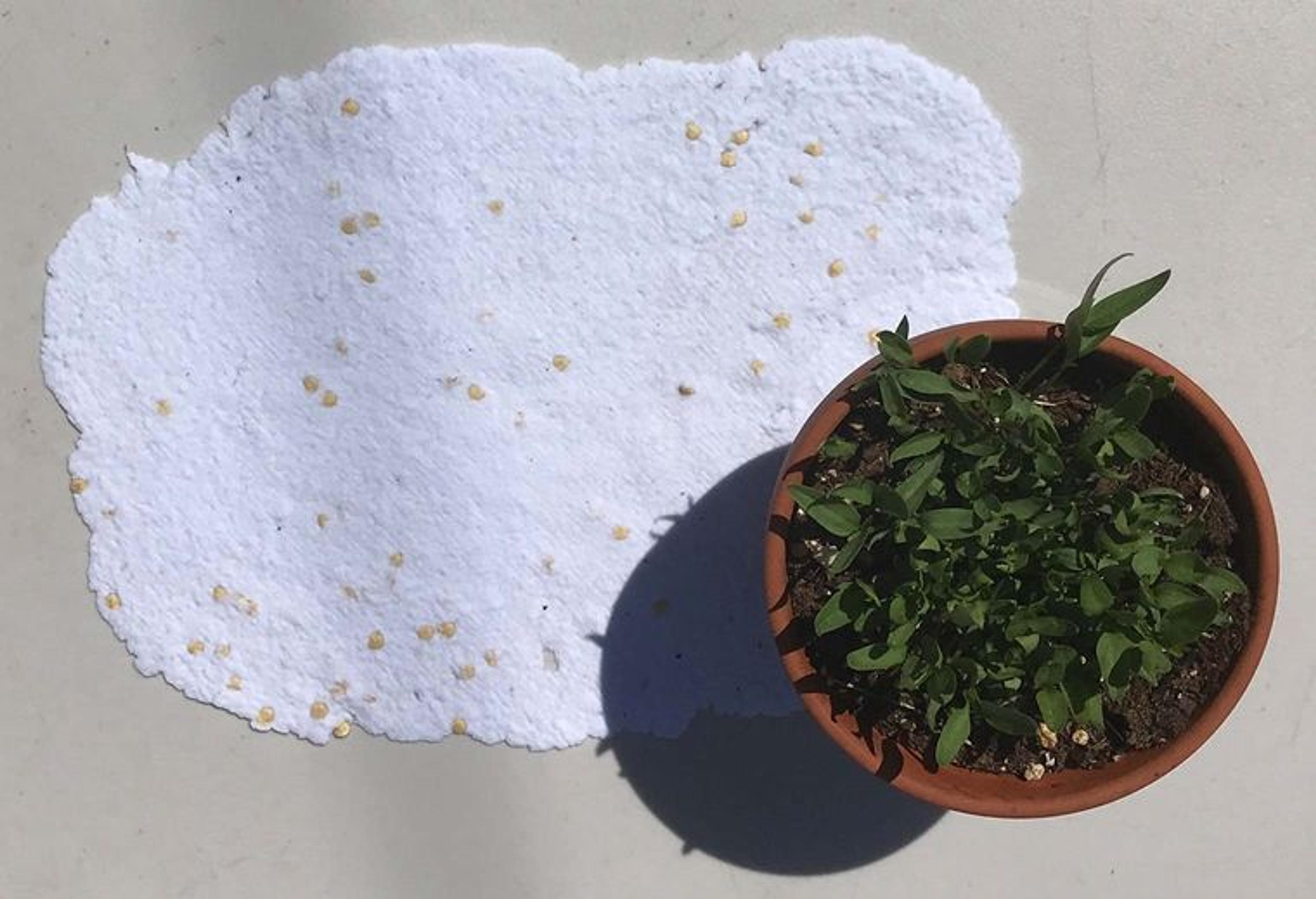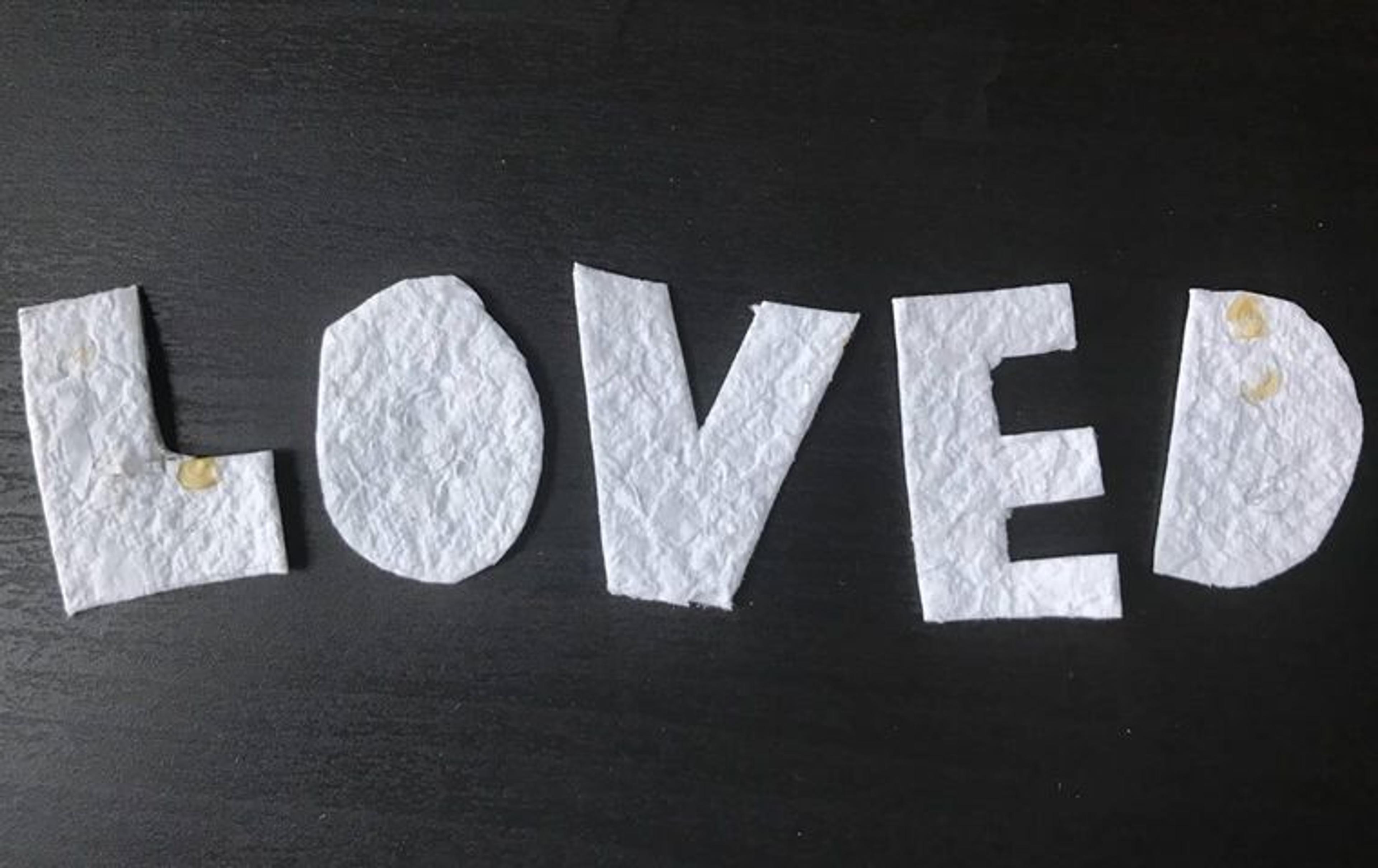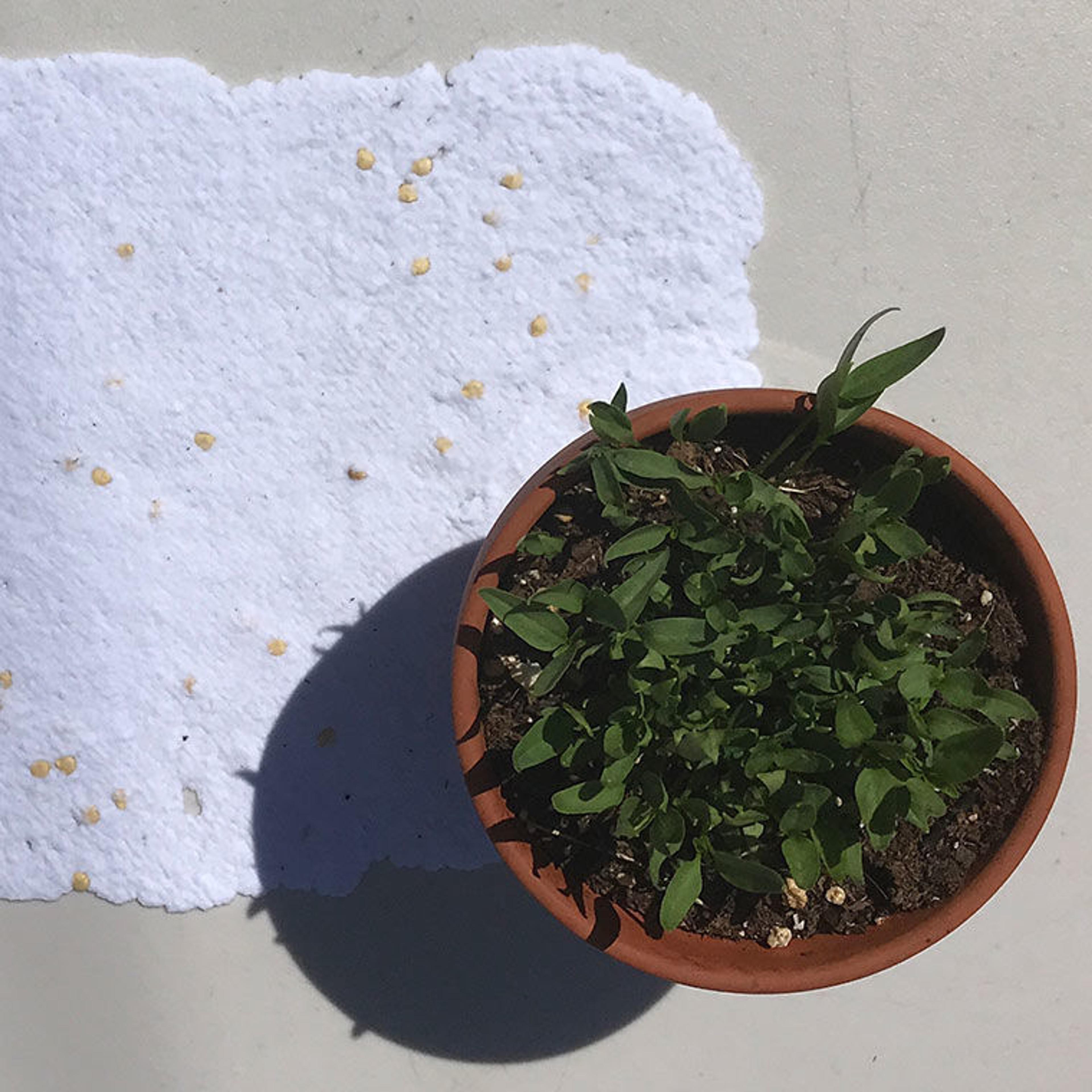Photo by Julie Marie Seibert

It's never too early to talk about race, justice, and bias with young people. It will likely require some homework on your part. First, you should take a moment to examine your own thoughts and feelings around the topics.
Then, find ways to continue educating yourself in areas you do not feel confident in addressing. There are countless resources available both online and in bookstores to get you started. The Met has shared a list of resources, many of which are to help kids and families learn and connect. You can use this list, as well as the activity below, to help you begin.
If you find it hard to sit face-to-face during this discussion, find a creative outlet to do together while you talk. Art has the ability to create a visual language when emotions are beyond us. In this activity, you and your family will select a word of intention that helps you find hope or power, such as LOVED, SEEN, BRAVE, or KINDNESS. Work together to turn this word into seeded paper that, over time, will grow into new life. Think about how your seeds might grow into a beautiful green pasture, like the one that artist Robert S. Duncanson paints in Landscape with Shepherd (1852).
Materials
- one cup finely shredded paper
- bowl
- 1/8 teaspoon plantable seeds
- spatula
- two pieces of cloth or towel
- scissors
- blender (optional)
Instructions
1. Soak shredded paper in a large bowl overnight. Try to avoid paper with a glossy finish.
2. Stir it occasionally.
3. Optional: Remove excess water, then place the mixture into a blender for 10-15 seconds. Blend until the texture is similar to a chunky soup. Add small amounts of water if it seems too dry.
4. Pour the mixture back into the bowl and slowly mix seeds in with a spatula.
5. Using your hands, flatten small amounts at a time on a piece of cloth to make a large, thin rectangle.
6. Remove excess water by gently pressing with a second cloth or towel.
7. Leave seeded paper in the sun to dry fully.
8. Cut the word out of the seeded paper, letter by letter, with scissors. Here's an example:
Photo by Julie Marie Seibert

9. Plant the cut-out word in soil, water regularly, and patiently wait for signs of growth. It may take a few days for seedlings to appear.
While you wait for your seeded word to grow, this is also an excellent time to diversify your book collection (see below for suggestions on where to start). Providing an environment that is both developmentally appropriate and models empathy is critical at this time. This is the start of a lifelong learning opportunity.
If your child (or children) pose difficult questions, do not be afraid to say, "I don't know." Just be sure to follow it up with, "Those are great questions. Let's find out together." This moment may be uncomfortable, but it is the beginning of a journey you will take together to build a world that is just and equitable.
Email us images of your word and plants at MetKids@metmuseum.org! We would love to see and learn about the world through your child(ren)'s eyes!
Additional resources
Online resources
• Anti-Racism Resources for All Ages (Dr. Nicole A. Cooke)
• How to Talk to Kids about Race and Racism (Parent Toolkit)
• Talking About Race (National Museum of African American History and Culture)
• The Conscious Kid: Website | Twitter | Instagram | Facebook
Children's books
Coretta Scott by Ntozake Shange, illustrated by Kadir Nelson
Frederick Douglass: The Lion Who Wrote History by Walter Dean Myers, illustrated by Floyd Cooper
Gordon Parks: How the Photographer Captured Black and White America by Carole Boston Weatherford, illustrated by Jamey Christoph
I, Too, Am America by Langston Hughes
Little Leaders: Bold Women in Black History by Vashti Harrison
Moses: When Harriet Tubman Led Her People to Freedom by Carole Boston Weatherford, illustrated by Kadir Nelson
My Hair is a Garden by Cozbi A. Cabrera
Preaching to the Chickens: The Story of Young John Lewis by Jabari Asim, illustrated by E.B. Lewis
Rosa by Nikki Giovanni, illustrated by Bryan Collier
Schomburg: The Man Who Built a Library by Carole Boston Weatherford, illustrated by Eric Velasquez
Sit-In: How Four Friends Stood Up by Sitting Down by Andrea Davis Pinkney, illustrated by Brian Pinkney
Something Happened in Our Town by Marianne Celano, Marietta Collins, and Ann Hazzard, illustrated by Jennifer Zivoin
Sulwe by Lupita Nyong'o, illustrated by Vashti Harrison
The Day You Begin by Jacqueline Woodson, illustrated by Rafael López
Voice of Freedom: Fannie Lou Hamer, Spirit of the Civil Rights Movement by Carole Boston Weatherford, illustrated by Ekua Holmes
We March by Shane Evans
